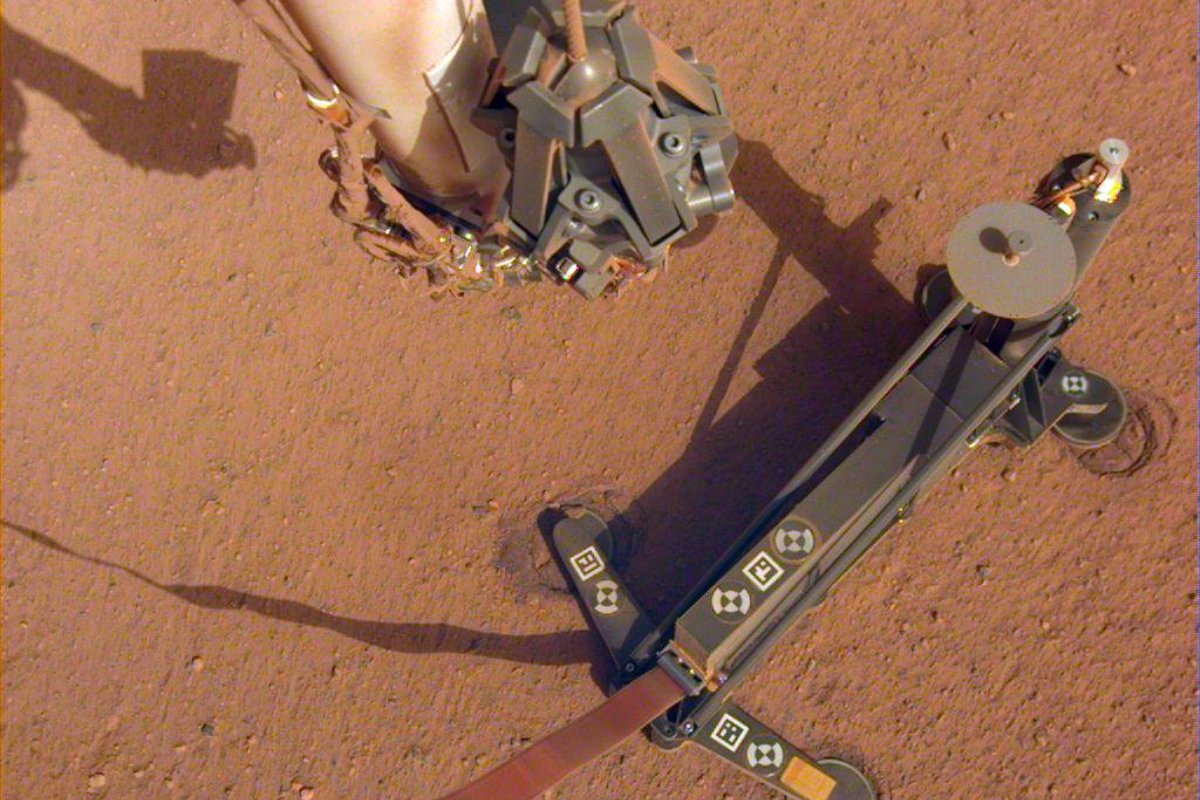NASA detected the first ever recorded quake on Mars. Dubbed Marsquake, the seismic event was picked up by NASA InSight lander’s sensors on 6 April.
In a recording of the rumble that was shared by the American space agency with the public on 23 April, a sound of the Marsquake can be heard against the sounds made by Martian winds and the robotic arm of the probe.
Advertisement
The Marsquake sound can be compared to the sound made when a metro train arrives or departs an underground station.
According to NASA this was the first recorded trembling that appears to have come from inside the planet, as opposed to being caused by forces above the surface, such as wind.
It is also the first time that a seismic signal has been detected on a planetary body other than Earth and Moon.
“The Martian Sol 128 event is exciting because its size and longer duration fit the profile of moonquakes detected on the lunar surface during the Apollo missions,” said Lori Glaze, Planetary Science Division director at NASA Headquarters.
The space agency said that the scientists are trying to determine the exact cause of the quake. But the event, according to NASA, was “too small to provide solid data on the Martian interior”.
It is interesting to note that unlike Earth, Mars and Moon do not have tectonic plates. Explaining how the quake may have happened NASA said that the source could be the breaking of the crust due to stress (of the planet) accumulated through a “continual process of cooling and contraction”.
What helped InSight pick the signal up was the extremely quiet Martian surface. By comparison, a similar signal would be lost in the deluge of sounds made on Earth by oceans and weather.
This is not the first time that a Marsquake has been recorded. InSight’s seismometer, which was placed on the planet’s surface on 19 December last year, had detected three other seismic signals on 14 March, 10 April and 11 April. All three signals were smaller than the 6 April event.
Like Marsquake, scientists have also recorded Moonquakes – seismic event on the Moon. NASA measured Moonquakes between 1969 and 1977 when Apollo astronauts installed five seismometers on the surface of Earth’s natural satellite.
While NASA is busy preparing for another manned mission to the Moon by 2024, the space agency also has plans for human exploration of Mars.
The main aim of InSight is to understand Mars’ interior structure.
Researchers can then compare this with Earth’s internal rock layering, to learn something new about the different ways in which these two worlds have evolved.











